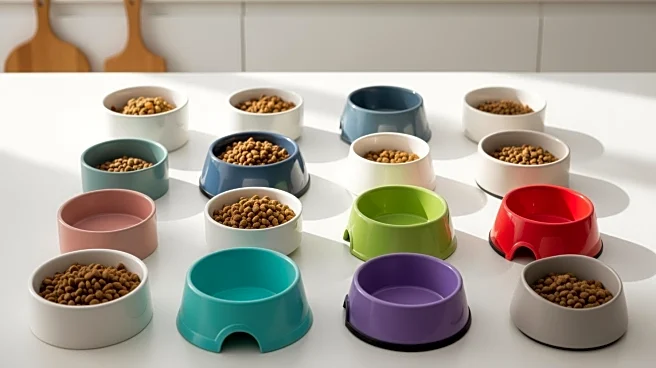What's Happening?
Pet food prices have seen significant increases over the past five years, with some brands experiencing hikes between 13% and 58%. Notably, Purina dog food prices rose by 54%, while cat food prices increased
by 44%. Blue Buffalo cat food saw a 58% increase, contrasting with a 36% rise for its dog food. These price changes reflect broader trends in the pet food industry, where manufacturers are adjusting costs due to various factors, including ingredient sourcing and production expenses.
Why It's Important?
The rising cost of pet food is a concern for pet owners, impacting household budgets and potentially altering purchasing decisions. As pet ownership remains high in the U.S., these price increases could lead to shifts in consumer behavior, with some opting for more affordable brands or reducing spending on pet-related products. The trend also highlights the economic pressures facing the pet food industry, which may influence future pricing strategies and product offerings.
What's Next?
Pet food manufacturers may continue to adjust prices in response to market conditions and production costs. Consumers might seek alternative options, such as homemade pet food or budget-friendly brands, to manage expenses. The industry could see increased competition as brands strive to offer value while maintaining quality. Additionally, there may be discussions on transparency in pricing and ingredient sourcing, as consumers become more conscious of product costs.
Beyond the Headlines
The price increases in pet food raise questions about the sustainability of current manufacturing practices and the impact on consumer trust. As prices rise, there may be ethical considerations regarding the affordability of pet care and the responsibility of manufacturers to provide accessible options. The situation could also prompt innovation in the industry, with companies exploring cost-effective solutions and alternative ingredients.












